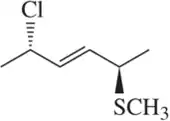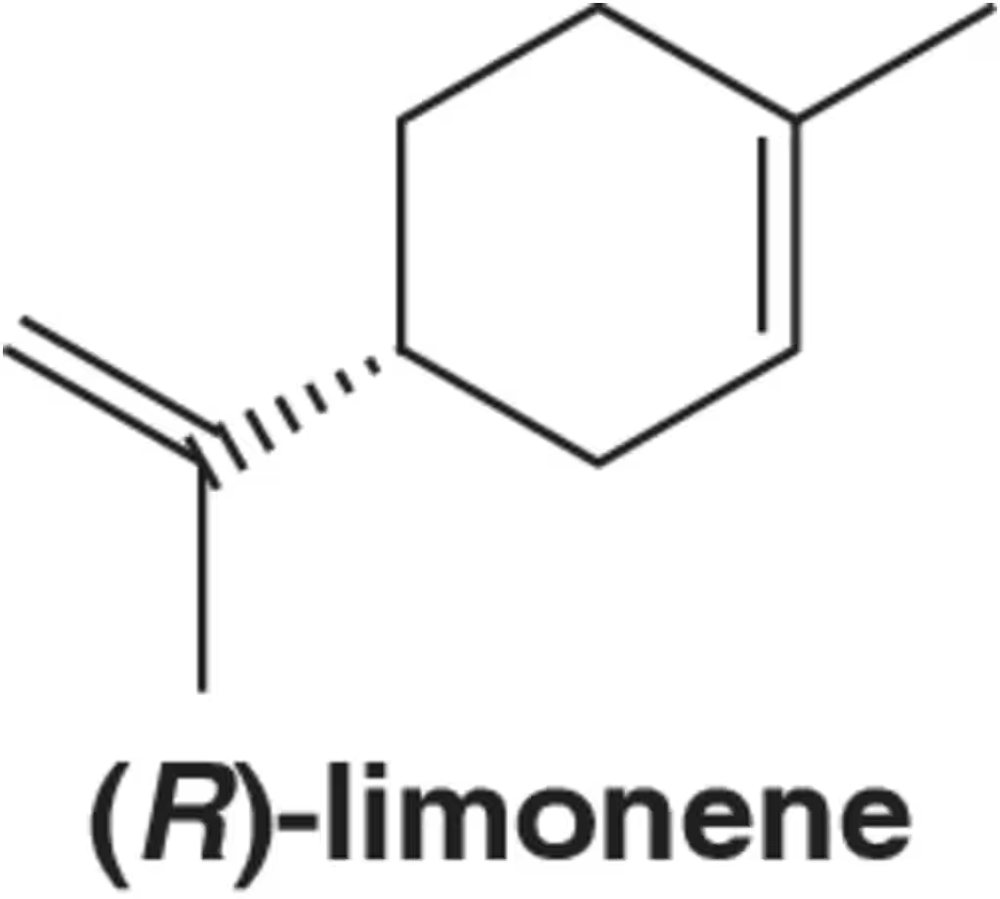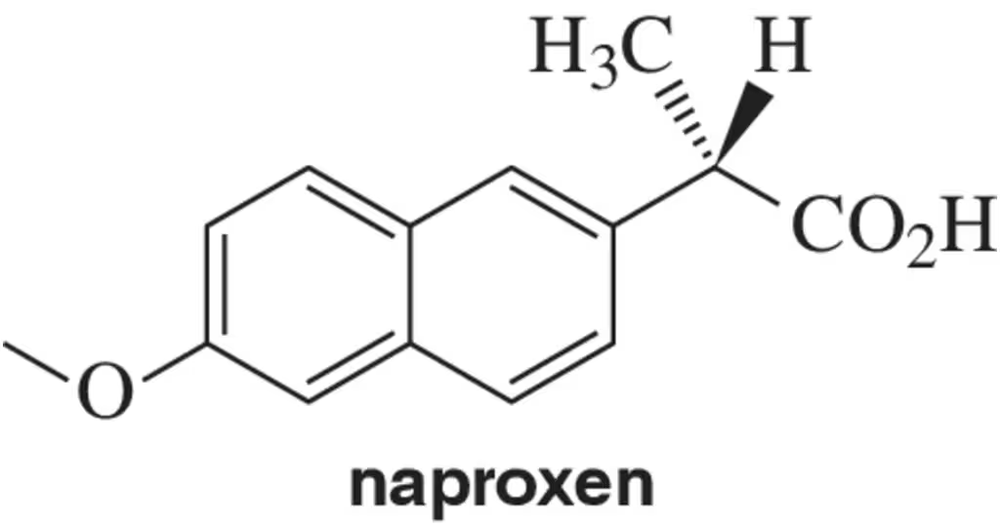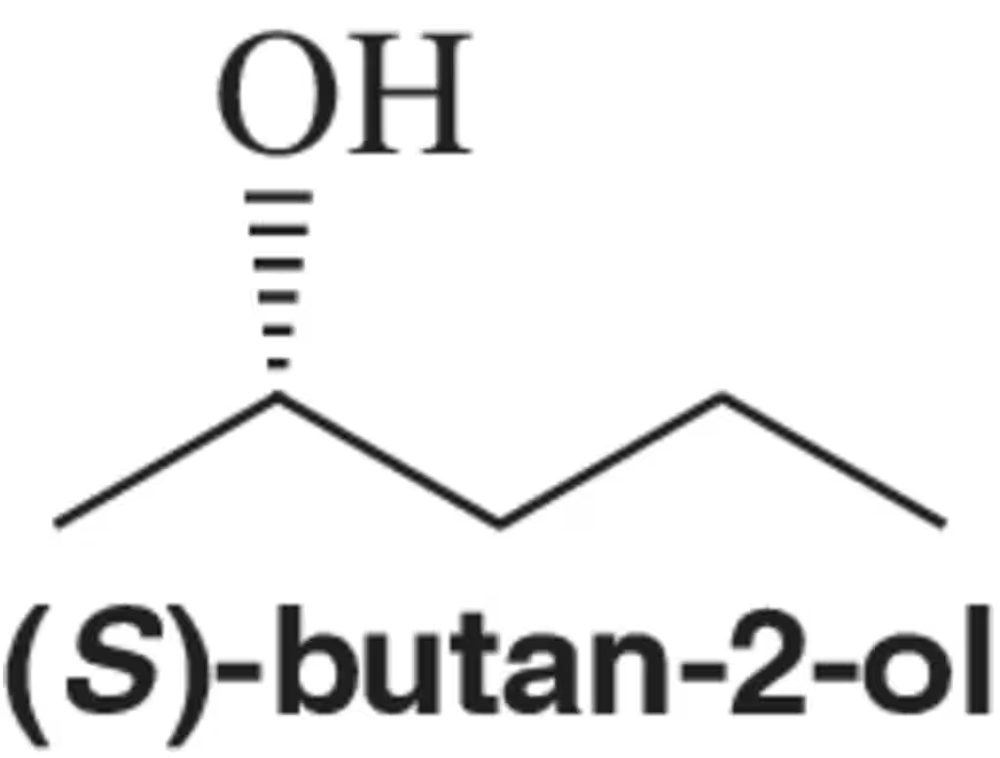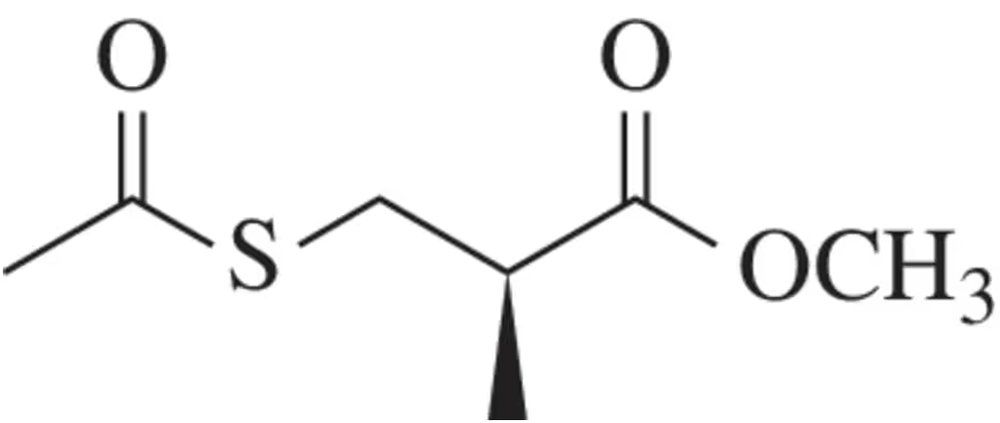 Back
BackProblem 12c
Identify the following molecules as chiral or achiral. If chiral, draw the nonsuperimposable mirror image and verify its nonsuperimposability.
(c)
Problem 12e
Identify the following molecules as chiral or achiral. If chiral, draw the nonsuperimposable mirror image and verify its nonsuperimposability.
(e)
Problem 12f
Identify the following molecules as chiral or achiral. If chiral, draw the nonsuperimposable mirror image and verify its nonsuperimposability.
(f)
Problem 13
A molecule of the type shown is discussed in greater detail in Section 6.5.1. Although it contains at least one atom with four different groups attached, why is it not a chiral molecule?
Problem 14b
For each of the following chiral molecules, obtain the enantiomer (i) by drawing the nonsuperimposable mirror image and (ii) by switching the spatial orientation at each asymmetric center. Confirm (possibly using models) that the structures you drew for (i) and (ii) are the same.
(b)
Problem 14d
For each of the following chiral molecules, obtain the enantiomer (i) by drawing the nonsuperimposable mirror image and (ii) by switching the spatial orientation at each asymmetric center. Confirm (possibly using models) that the structures you drew for (i) and (ii) are the same.
(d)
Problem 15
Draw the mirror image of the following molecule. Then, using the mirror image generated, switch the spatial orientation at the asymmetric center. Is the final structure the enantiomer of the original? If not, what is it?
Problem 16
A molecule of the type shown here is discussed in greater detail in Section 6.5.1. Draw the mirror image. Is it superimposable? Switch the spatial orientation at both asymmetric centers. Have you generated a new molecule?
Problem 17a
Identify the following substituted cycloalkanes as cis or trans.
(a)
Problem 17c
Identify the following substituted cycloalkanes as cis or trans.
(c)
Problem 18a
For the compound 1-ethyl-3-isopropylcyclopentane,
(a) draw two different cis and two different trans isomers.
Problem 18b
For the compound 1-ethyl-3-isopropylcyclopentane,
(b) What is the stereochemical relationship between the cis isomers?
Problem 18c
For the compound 1-ethyl-3-isopropylcyclopentane
(c) What is the stereochemical relationship between trans isomers?
Problem 18d
For the compound 1-ethyl-3-isopropylcyclopentane,
(d) LOOKING AHEAD What is the relationship between a cis isomer and a trans isomer?
Problem 19j
By comparing them to the models you created in Section 6.3.2, label the following chiral centers as R or S.
(j)
Problem 20a
Order the following sets of substituents via their priority using the CIP rules. (R = position of attachment to the asymmetric center.)
(a)
Problem 22a
Of the following pairs, identify the higher priority substituent according to the CIP rules. (R = position of attachment to the asymmetric center.)
(a)
Problem 24a
Prioritize the substituents at each chiral center and then, by comparing them to the models you created in Section 6.3.2, label the absolute configuration as R or S.
(a)
Problem 24d
Prioritize the substituents at each chiral center and then, by comparing them to the models you created in Section 6.3.2, label the absolute configuration as R or S.
(d)
Problem 24f
Prioritize the substituents at each chiral center and then, by comparing them to the models you created in Section 6.3.2, label the absolute configuration as R or S
(f)
Problem 25c
Prioritize the substituents at each chiral center and then, by each of the two methods discussed in Section 6.3.2.4, determine the absolute configuration. [Do not use your models, except to check your answers.]
(c)
Problem 25d
Prioritize the substituents at each chiral center and then, by each of the two methods discussed in Section 6.3.2.4, determine the absolute configuration. [Do not use your models, except to check your answers.]
(d)
Problem 25h
Prioritize the substituents at each chiral center and then, by each of the two methods discussed in Section 6.3.2.4, determine the absolute configuration. [Do not use your models, except to check your answers.]
(h)
Problem 26
(R)-Limonene is a cyclic terpene responsible for the smell of oranges and other citrus fruits.
(a) Given that (R)-limonene rotates plane-polarized light in the clockwise direction, should it be referred to as (d) or (l)?
(b) Is it (+) or (-)?
(c) What direction (d or l; + or −) would you expect (S)-limonene to rotate plane-polarized light?
Problem 27a
Naproxen is a commercially available anti-inflammatory sold under the name Aleve.
(a) Assign the absolute configuration as R or S.
Problem 27b,c,d
Naproxen is a commercially available anti-inflammatory sold under the name Aleve.
(b) Given that naproxen rotates plane-polarized light in the clockwise direction, should it be referred to as (d) or (l)?
(c) Is it (+) or (-)?
(d) What direction (d or l; + or −) would you expect the enantiomer of naproxen to rotate plane-polarized light?
Problem 28
Based on the absolute configuration of (S)-butan-2-ol, what can you say about the direction it rotates plane-polarized light?
Problem 29
A student wanted to measure the specific rotation of the following propionate derivative (density = 1.12 g/ml).
A sample of the pure compound was placed in a 10.0-cm polarimeter tube, and using the sodium D line, the observed rotation at 20°C was determined to be +46.6° . What is the specific rotation of the propionate derivative?
Problem 30
Cholesterol (50 mg) was dissolved in 10 mL of chloroform and placed in a 1.0-cm polarimeter cell. This solution produced an observed rotation (using the sodium D line at 20°C ) of - 1.58° . What is the specific rotation of cholesterol?
Problem 31
Using a 1.0-cm polarimeter cell and a solution prepared by dissolving 2.54 g of glucose in 1 L of H₂O, the specific rotation of d-glucose was calculated to be +52.7° at 20 °C using the sodium D line as the source of light. What was the observed rotation of the solution?



